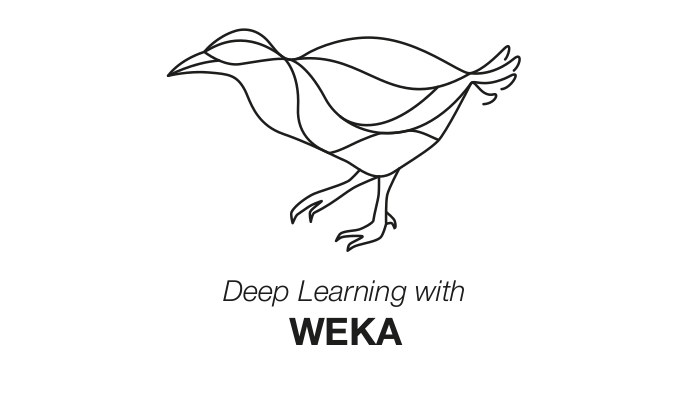WekaDeeplearning4j: Deep Learning using Weka

WekaDeeplearning4j is a deep learning package for the Weka workbench. It is developed to incorporate the modern techniques of deep learning into Weka. The backend is provided by the Deeplearning4j Java library.
The source code for this package is available on GitHub. The java-doc can be found here.
Functionality
All functionality of this package is accessible via the Weka GUI, the commandline and programmatically in Java.
The following Neural Network Layers are available to build sophisticated architectures:
- ConvolutionLayer: applying convolution, useful for images and text embeddings
- DenseLayer: all units are connected to all units of its parent layer
- SubsamplingLayer: subsample from groups of units of the parent layer by different strategies (average, maximum, etc.)
- BatchNormalization: applies the common batch normalization strategy on the activations of the parent layer
- LSTM: uses long short term memory approach
- GlobalPoolingLayer: apply pooling over time for RNNs and pooling for CNNs applied on sequences
- OutputLayer: generates classification / regression outputs
Further configurations can be found in the Getting Started and the Examples sections.

New Release (1.7.2)
This release adds the IsGPUAvailable tool, similar to Keras,TF,etc., which provides a simple way to check whether the
GPU drivers are loaded correctly. Check out the Usage Instructions alongside
the GPU setup instructions.
New Release (1.7.0)

Dl4j Inference Panel & Dl4jCNNExplorer
One major addition in WekaDeeplearning4j v1.7.0 is the new Dl4jCNNExplorer and the
associated GUI Dl4j Inference Panel. This brings real-time inference to the WEKA universe,
allowing you to quickly run an image classification CNN model on an image without having to
load an entire .arff file.
The Dl4jCNNExplorer supports both a custom-trained Dl4jMlpClassifier and a model from
the Model Zoo, so it can be used to verify your model's prediction capabilities
or simply play around with pretrained models and explore what state-of-the-art
architectures may work best for your domain.
Check out the usage example to see how easy it is to get started.
Saliency Map Generation with ScoreCAM
Another exciting new feature is the implementation of ScoreCAM, a saliency map generation technique.
This can be accessed through the Dl4jCNNExplorer, allowing you to not only perform prediction on an image,
but look at what in the image your model was using for prediction.
This can be invoked from the command-line, although the best user experience is to be had from the GUI using the Saliency Map Viewer, which allows you to quickly customize the ScoreCAM target classes.
Check out the usage example to see what new insights can be brought to your workflow.
Progress Manager

We've created a simple---but effective---progress bar and added this to the long-running tasks (model training, feature extraction, etc.). This provides a graphical indicator of progress and remaining ETA for the current job so will make WEKA more usable for large jobs.
Model Summaries
We've also added model summaries
to the documentation, which specify the different models and their layers. This can be useful for designing
your own architectures or with the Dl4jMlpFilter, when using intermediary layers for feature extraction.
Citation
Please cite the following paper if using this package in an academic publication:
S. Lang, F. Bravo-Marquez, C. Beckham, M. Hall, and E. Frank WekaDeeplearning4j: a Deep Learning Package for Weka based on DeepLearning4j, In Knowledge-Based Systems, Volume 178, 15 August 2019, Pages 48-50. DOI: 10.1016/j.knosys.2019.04.013 (author version)
BibTex:
@article{lang2019wekadeeplearning4j,
title={WekaDeeplearning4j: A deep learning package for Weka based on Deeplearning4j},
author={Lang, Steven and Bravo-Marquez, Felipe and Beckham, Christopher and Hall, Mark and Frank, Eibe},
journal={Knowledge-Based Systems},
volume = "178",
pages = "48 - 50",
year = "2019",
issn = "0950-7051",
doi = "https://doi.org/10.1016/j.knosys.2019.04.013",
url = "http://www.sciencedirect.com/science/article/pii/S0950705119301789",
publisher={Elsevier}
}
Contributing
Contributions are always welcome. If you want to contribute to the project, check out our contribution guide.
Future Work
Future work on WekaDeeplearning4j will include network weight and activation visualization, and support for multiple embeddings as input channels for textual data.